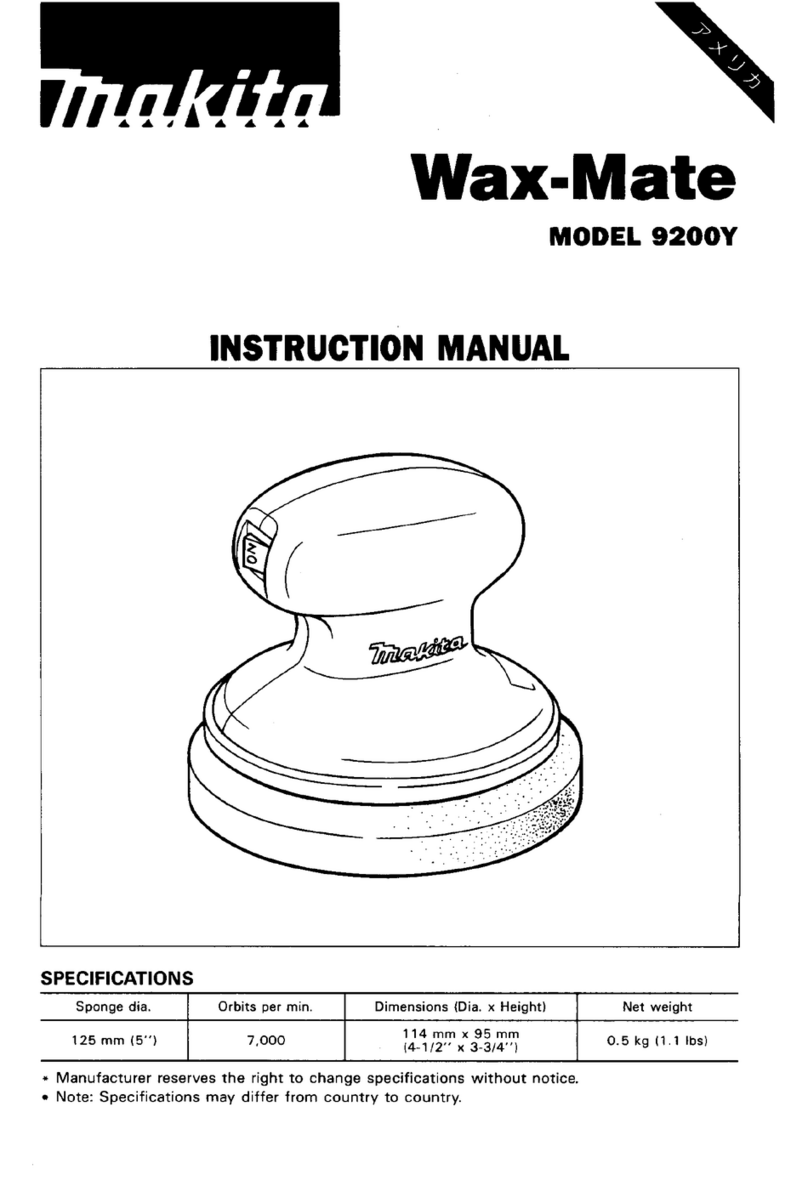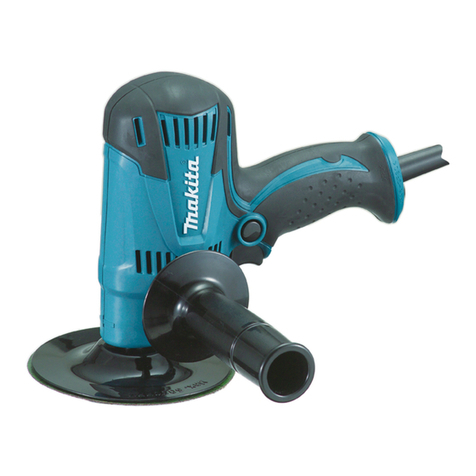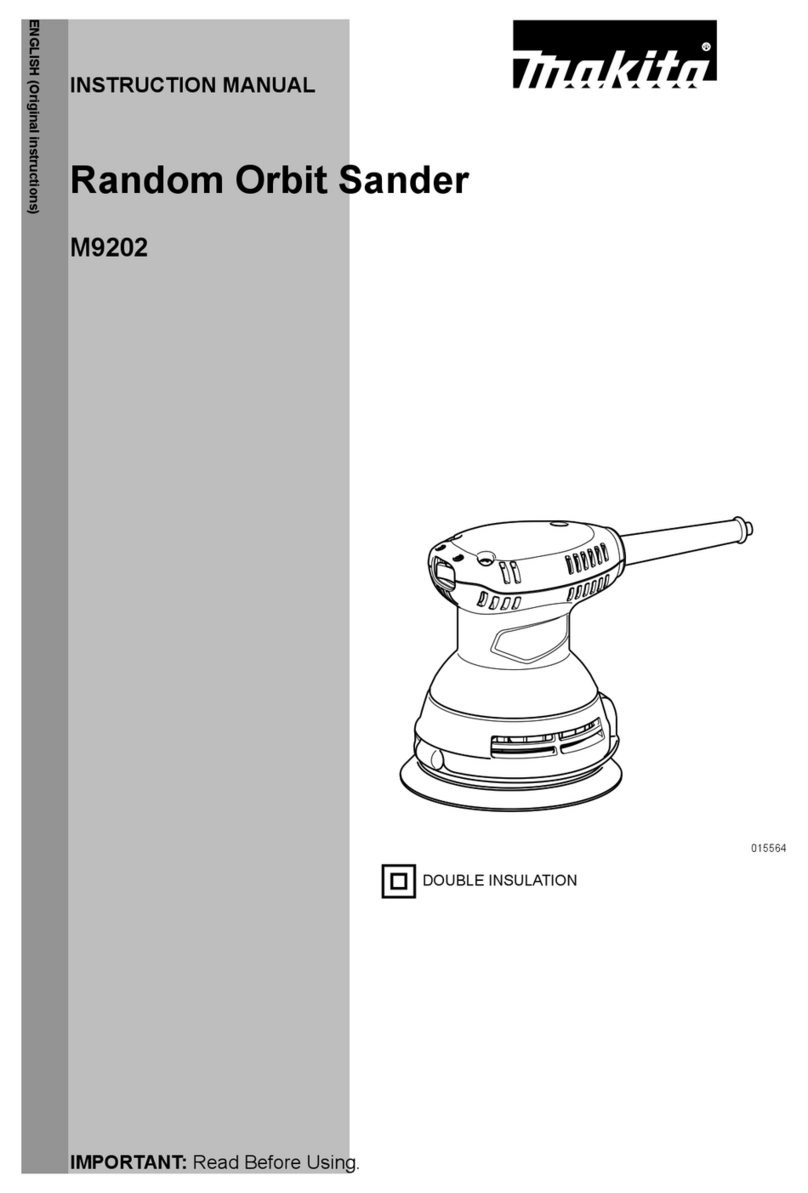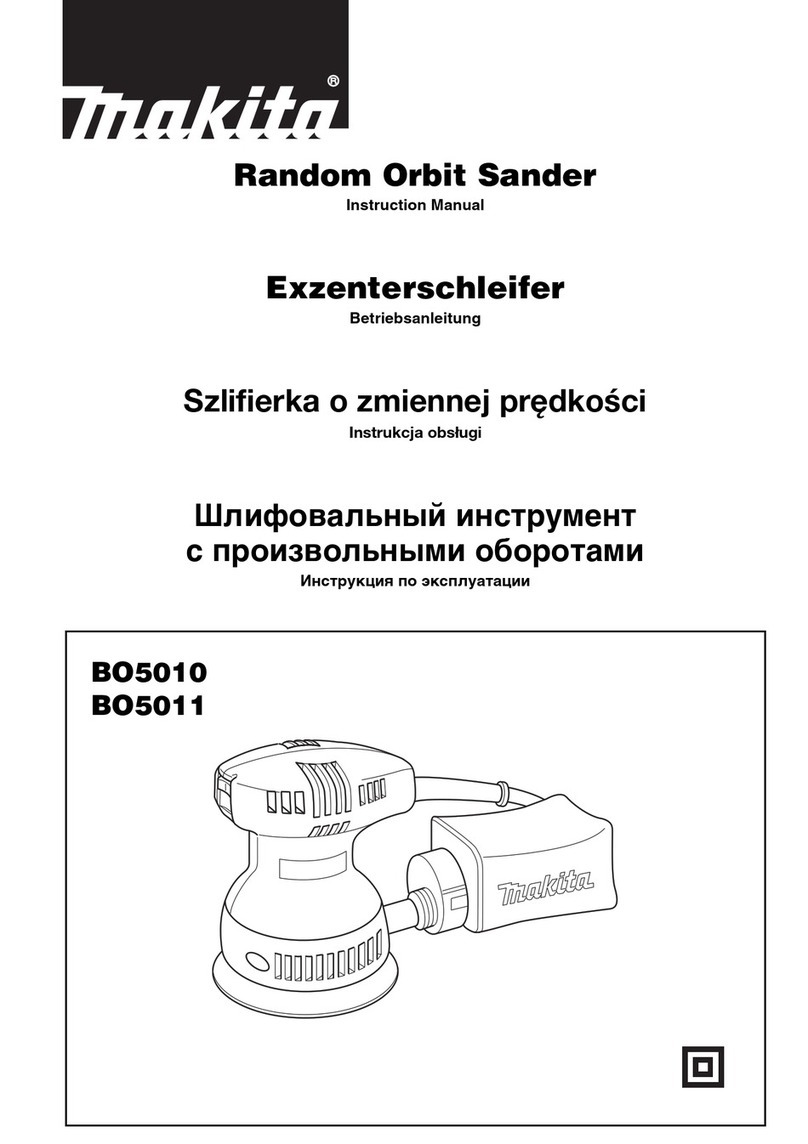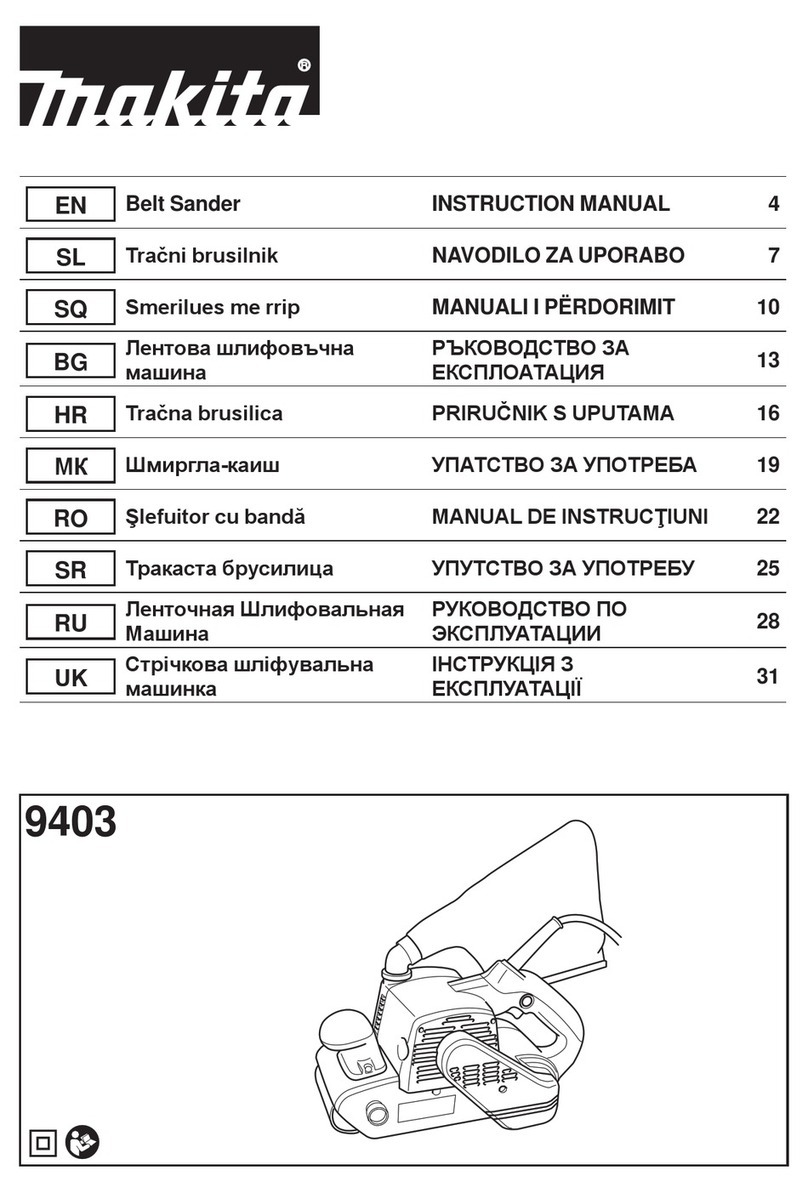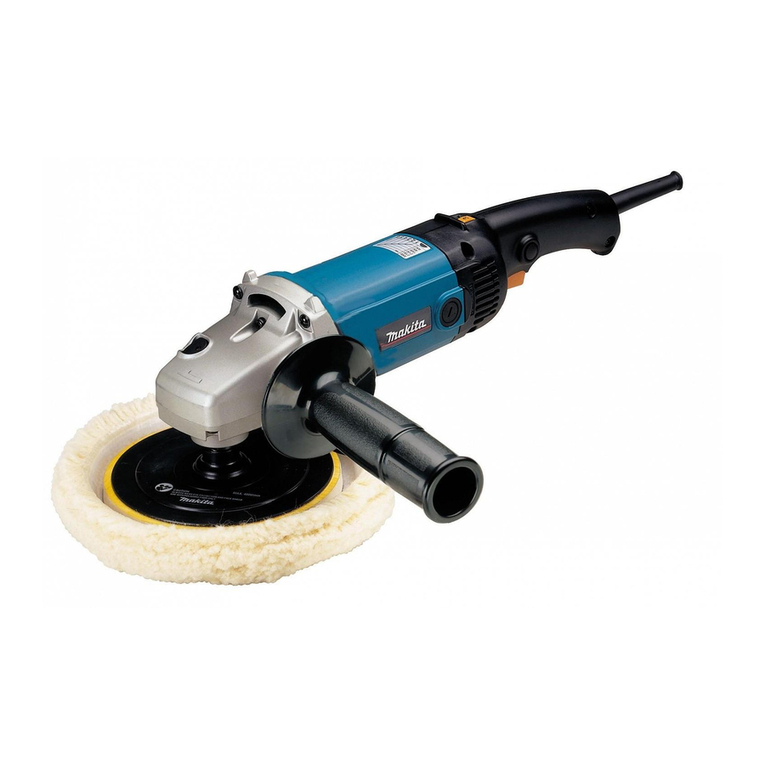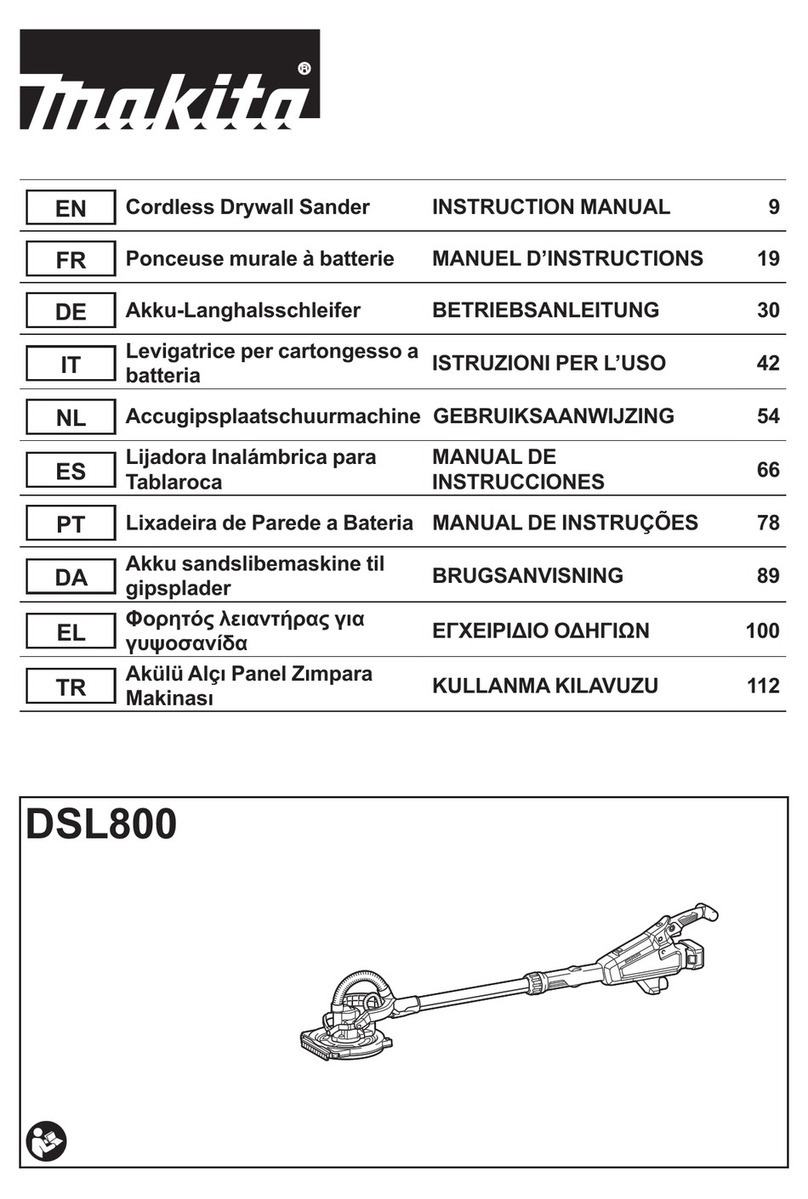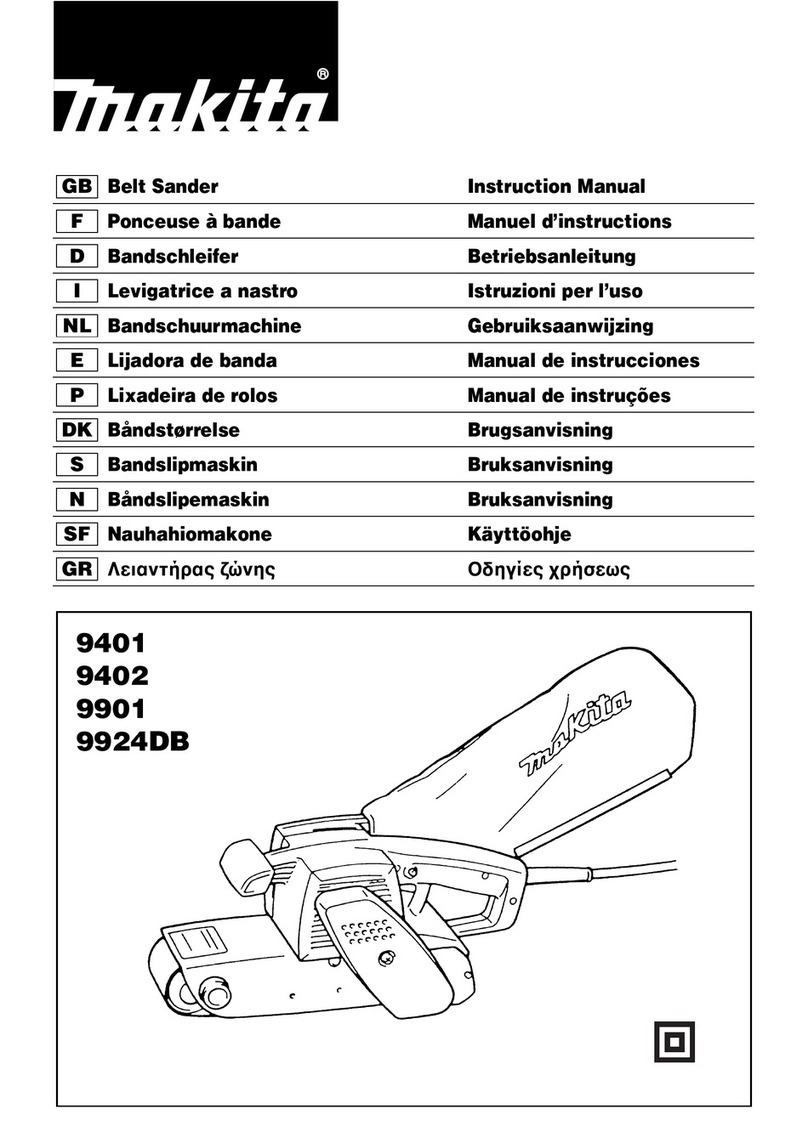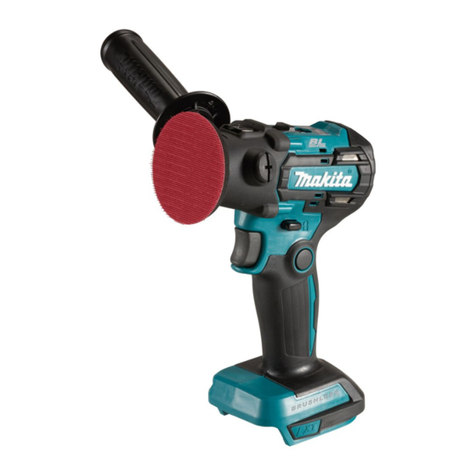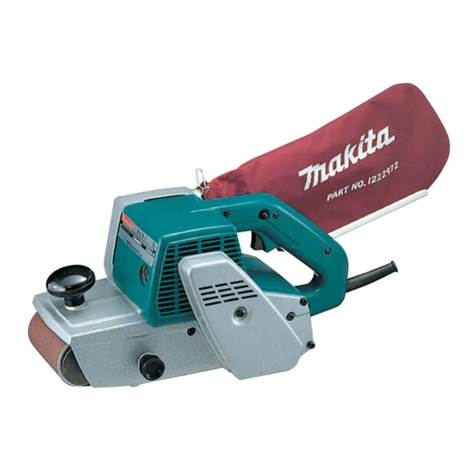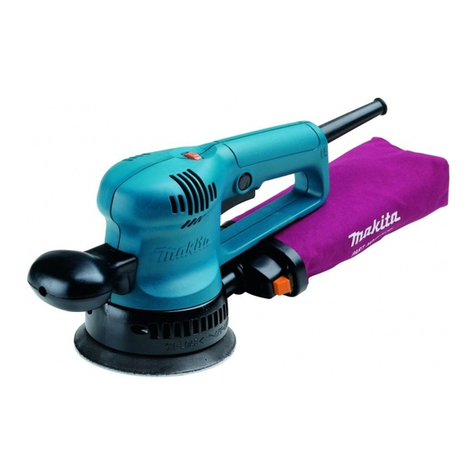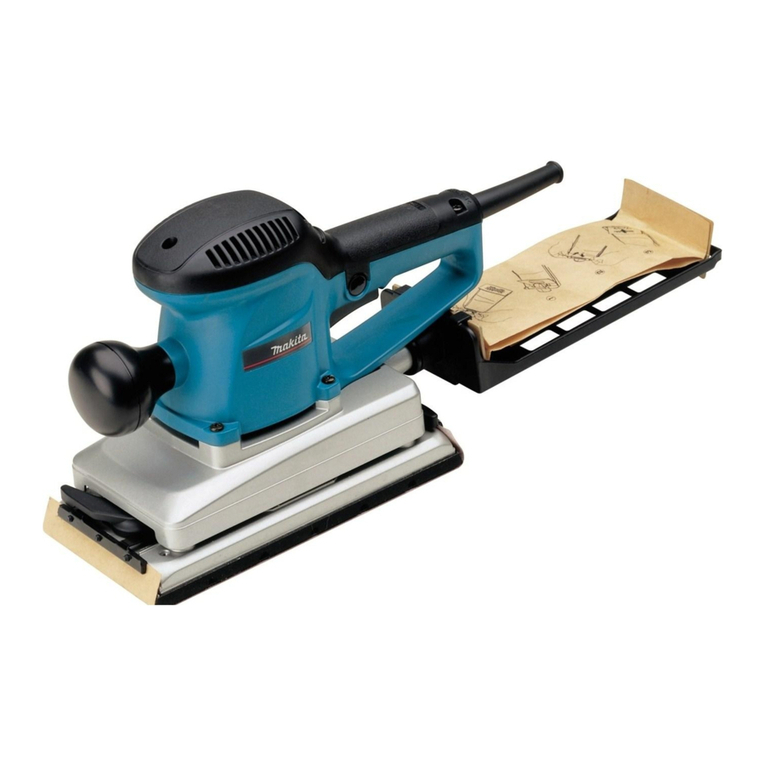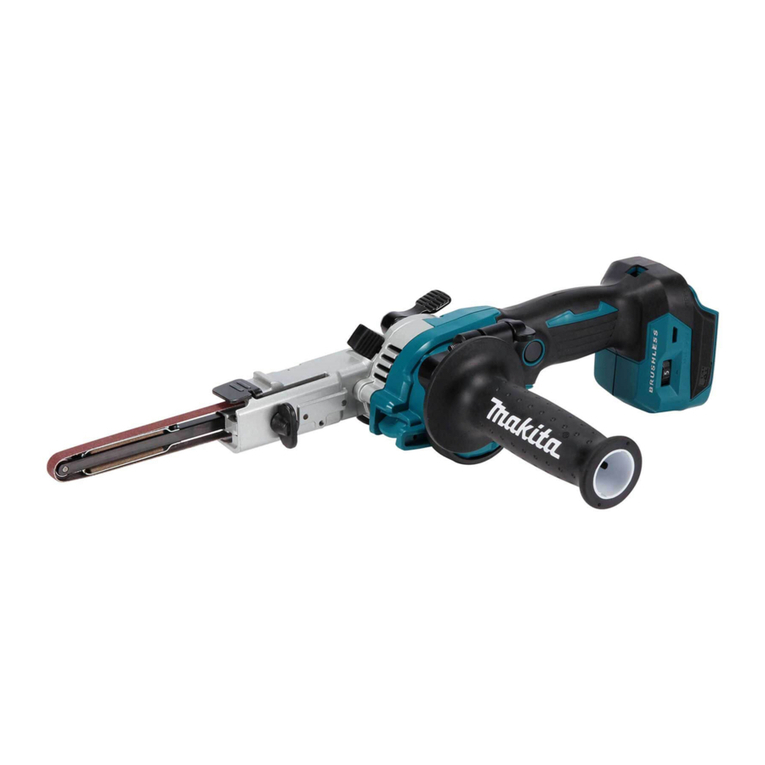
7
Installing abrasive disc
Fig.4
To install the abrasive disc, first remove all dirt or foreign
matter from the pad. Then attach the abrasive disc to the
pad. Be careful to align the holes in the abrasive disc
with those in the pad.
Installing dust bag (optional accessory)
Fig.5
Install the dust bag on the tool with its mouth directing
downwards.
Emptying dust bag
Fig.6
When the dust bag is about half full, switch off the tool,
and remove the dust bag from the tool. Then remove the
dust nozzle from the dust bag after unlocking the dust
nozzle by turning it slightly counterclockwise. Empty the
dust bag by tapping it lightly.
Fig.7
After emptying the dust bag, install the dust nozzle on
the dust bag. Turn the dust nozzle slightly clockwise to
lock it in place. Then install the dust bag on the tool as
described in "Installing dust bag".
Installing paper filter bag (Optional accessory)
Fig.8
Make sure that the logo on the cardboard lip and the
logo on the dust box are on the same side, then install
the paper filter bag by fitting the cardboard lip in the
groove of each holding tab.
Fig.9
Make sure that the logo on the cardboard lip and the
logo on the dust nozzle are on the same side, then
install the dust nozzle on the dust box.
Removing dust box and paper filter bag
Fig.10
Remove the dust nozzle by pushing the two latches.
Fig.11
Remove the paper filter bag first by pinching the logo
side of its cardboard lip, then by pulling the cardboard lip
downwards to move it out of the holding tab of the dust
box.
Removing and reinstalling the skirt
CAUTION:
Do not use the tool without the skirt. Otherwise dust is
scattered all over.
Fig.12
You can choose one of 12 directions of the skirt in
accordance with your purpose.
Fig.13
To remove the skirt, remove the screw and remove the
skirt with slightly opening it for both sides.
Fig.14
To reinstall the skirt, install it with slightly opening it for
both sides. And fasten the screw.
CAUTION:
Do not set the skirt other than the designated angle.
Otherwise the tool may be damaged.
OPERATION
WARNING:
Never switch on the tool when it is in contact with the
workpiece, it may cause an injury to operator.
Sanding operation
Fig.15
CAUTION:
• Never run the tool without the abrasive disc. You
may seriously damage the pad.
• Never force the tool. Excessive pressure may
decrease the sanding efficiency, damage the
abrasive disc or shorten tool life.
• Using the tool with the pad edge contacting the
workpiece may damage the pad.
Hold the tool firmly. Turn the tool on and wait until it
attains full speed. Then gently place the tool on the
workpiece surface. Keep the pad flush with the
workpiece and apply slight pressure on the tool.
CAUTION:
The sanding pad rotates clockwise during the loaded
operation, but it may rotate counterclockwise during the
no-load operation.
Polishing operation (optional)
CAUTION:
• Use only a Makita genuine sponge pad, felt pad or
wool pad (optional accessories).
• Always operate the tool at low speed to prevent
work surfaces from heating abnormally.
• Never force the tool. Excessive pressure may
decrease the polishing efficiency and cause motor
overload, resulting in tool malfunction.
1. Applying wax
Fig.16
Use an optional sponge pad. Apply wax to the
sponge pad or work surface. Run the tool at low
speed to smooth out wax.
NOTE:
• First, wax a not conspicuous portion of the work
surface to make sure that the tool will not scratch
the surface or result in uneven waxing.
• The tool starts with high speed mode. Be careful
when you start the tool. The wax may be spattered.
It is recommended that you spread wax with the


